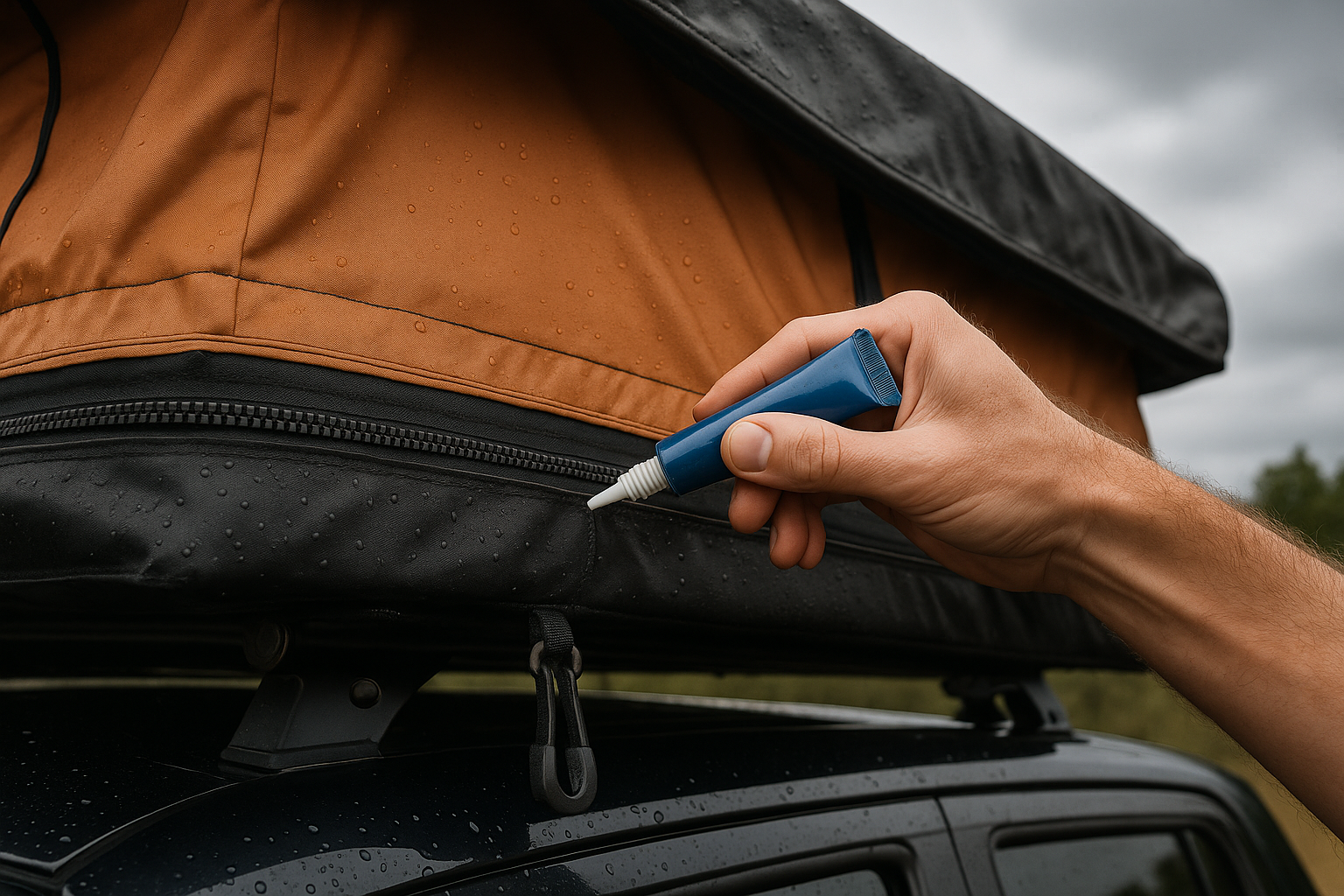You’ve just set up camp. The skies open, and rain starts hammering down. It’s only then that you realize—your rooftop tent leaks. Seams weeping water. Zippers that let rain in. It’s not just an inconvenience; it’s a threat to warmth, sleep, and safety. But don’t worry. You don’t need high-end waterproofing products or a repair shop to solve this. Here are smart, field-tested tactics to weatherproof your rooftop tent’s seams and zippers—solutions you can trust to keep you dry, using what’s at hand.
1️⃣ Seal Seams with Homemade Paste
If you spot leaks at seam lines:
- Create a makeshift seam sealant using candle wax (or lip balm) mixed with ash or dirt to add grit.
- Melt wax slightly with a lighter or body heat, then rub it into the seam using a cloth or finger.
- The gritty mixture fills gaps and creates a water-repellent barrier.
🛠 Why it works: Wax-based barriers repel water and the grit fills micro-holes, reinforcing the seal.
2️⃣ Zipper Rainproofing with Improvised Wax
Zippers are notorious leak points, especially in wind-driven rain:
- Rub candle wax, lip balm, or even a bar of soap along the zipper teeth.
- Focus on the junction points where the slider meets the fabric.
- If available, tie a small strip of fabric over the zipper pull to act as a rain drip edge.
🛠 Why it works: Wax creates a hydrophobic coating, reducing water seepage. The drip edge channels water away from the slider.
3️⃣ Tarp Overhangs: The Quick Canopy Hack
Prevent water from even reaching seams or zippers:
- Rig a tarp over the tent, ensuring it extends well beyond the sides.
- Use paracord, spare guy lines, or even shoelaces to tie the tarp to nearby trees, poles, or the car rack.
- Angle the tarp for runoff and airflow.
🛠 Why it works: A simple overhang redirects rain away, minimizing direct exposure to vulnerable points.
4️⃣ Pinch-and-Patch for Micro Leaks
For tiny holes or seam leaks:
- Use duct tape, electrical tape, or waterproof medical tape to patch from inside and outside.
- If tape isn’t available, press tree sap into the hole and cover with cloth.
- Reinforce with pressure—sandwich the patch with cloth or plastic and tie tightly.
🛠 Why it works: Double-sided patches reinforce the hole, while sap or wax adds natural sealing properties.
5️⃣ Seam Reinforcement with Found Materials
For longer seams:
- Collect thin plastic (from food wrappers or bags).
- Fold and lay over the leaking seam inside the tent.
- Tape or lash it down with cord, creating a water barrier under the seam.
🛠 Why it works: Plastic sheeting under seams catches drips, redirecting them to the tent’s edge or floor.
6️⃣ Create a Zipper Cover Flap from Spare Fabric
If your rooftop tent zipper lacks a rain guard:
- Use spare fabric (from a bandana, t-shirt, or groundsheet).
- Fold it into a strip and secure it over the zipper line with tape or lashings.
- Angle it so water runs off instead of down the zipper.
🛠 Why it works: Acts as a mini awning over the zipper, reducing direct rain exposure.
7️⃣ Field-Reinforced Waterproofing for Extended Stays
If you’re camping for several days in wet weather:
- Apply melted wax or soap mix along all seams and zipper lines at camp.
- Cover tent edges with natural materials like pine boughs or grass mats to slow water runoff.
- Dig a shallow trench (if allowed) around the tent base to divert water away.
🛠 Why it works: Combining multiple barriers maximizes waterproofing over time.
8️⃣ Emergency Rain Skirt: The Plastic Wrap Hack
For unexpected downpours:
- Wrap the lower edges of your rooftop tent with plastic sheeting, garbage bags, or even a poncho.
- Secure with duct tape or cord.
- Make sure water runs off and not under the tent.
🛠 Why it works: Creates an extra shield against splashback and rising water.
9️⃣ Water Diversion from the Car Roof
Remember, your rooftop tent sits on a flat roof that channels water:
- Place a rolled-up towel, spare cord, or even a branch under one edge of the tent base.
- This tilts the tent slightly, encouraging water to flow away from the base.
🛠 Why it works: Diverts pooled water from critical seams and zippers.
Real-World Camper Tips:
🔹 “I used melted wax from my camp candle to seal seams on a stormy night—bone dry till morning.”
🔹 “A poncho turned into a rain skirt kept my rooftop tent’s base from flooding during a flash downpour.”
🔹 “Soap rubbed into zippers works like magic for water repellency.”
Conclusion:
When rain turns relentless, you don’t have to resign yourself to soaked gear and miserable nights. With a bit of ingenuity—and the materials you already have—you can seal leaks, shield zippers, and keep your rooftop tent dry. From wax-and-soap hacks to plastic skirt reinforcements, these real-world tactics ensure that you’re weatherproofed and ready for whatever the wilderness throws your way.
🌧️ Don’t just survive the storm—stay dry and in control.

